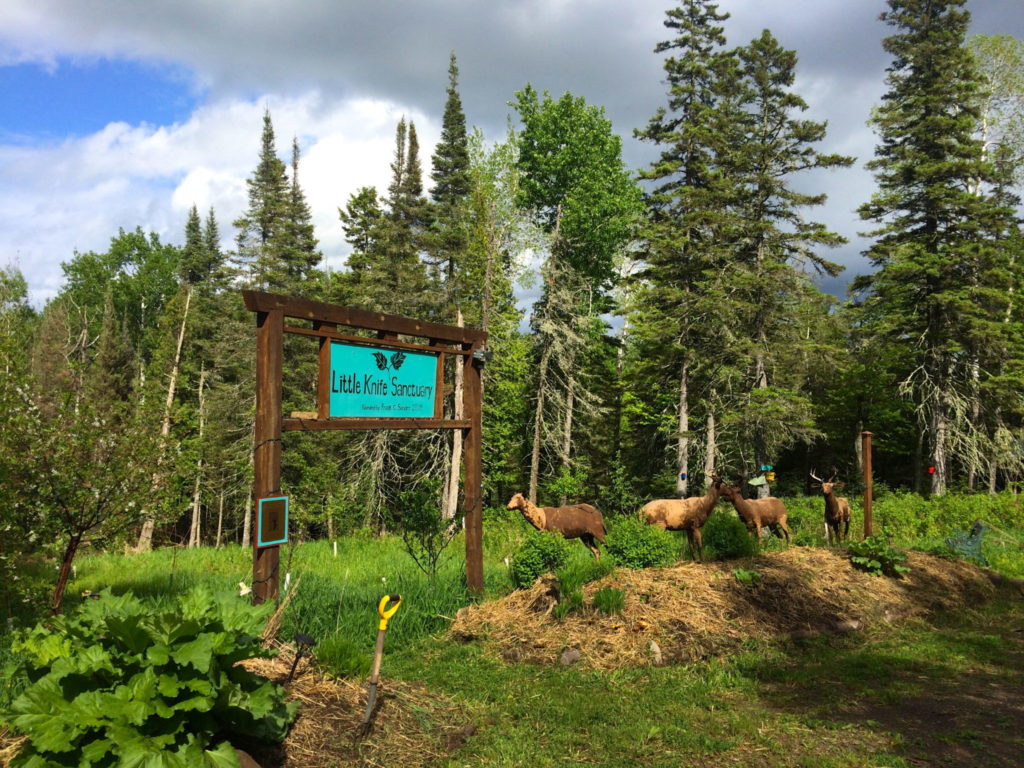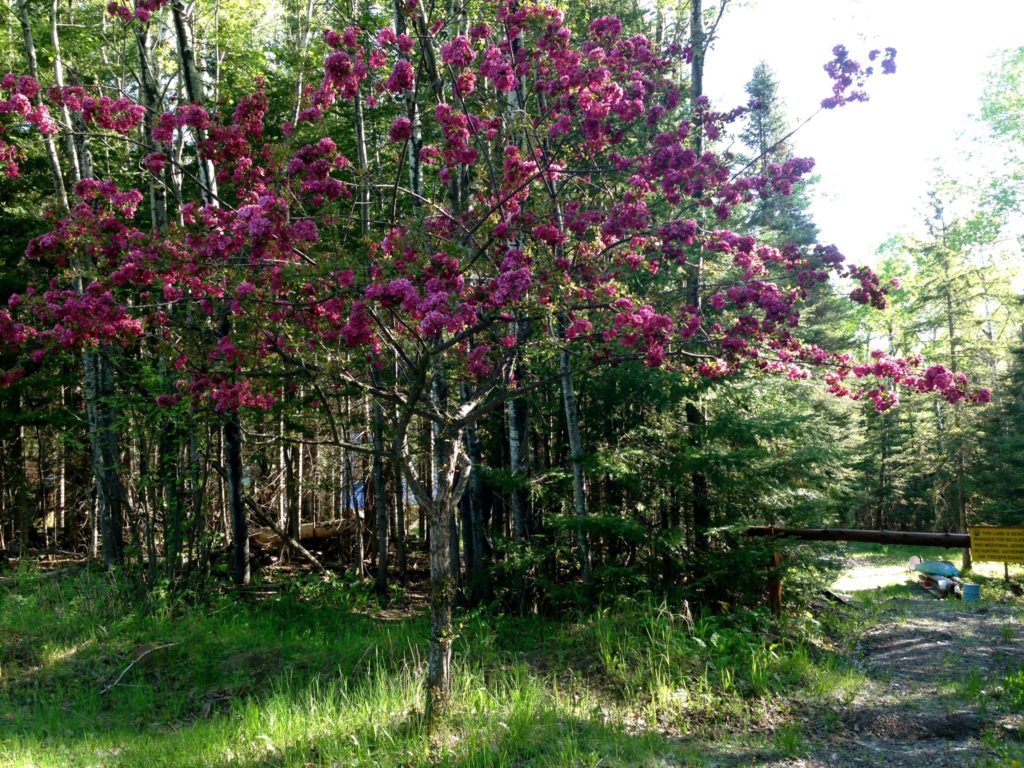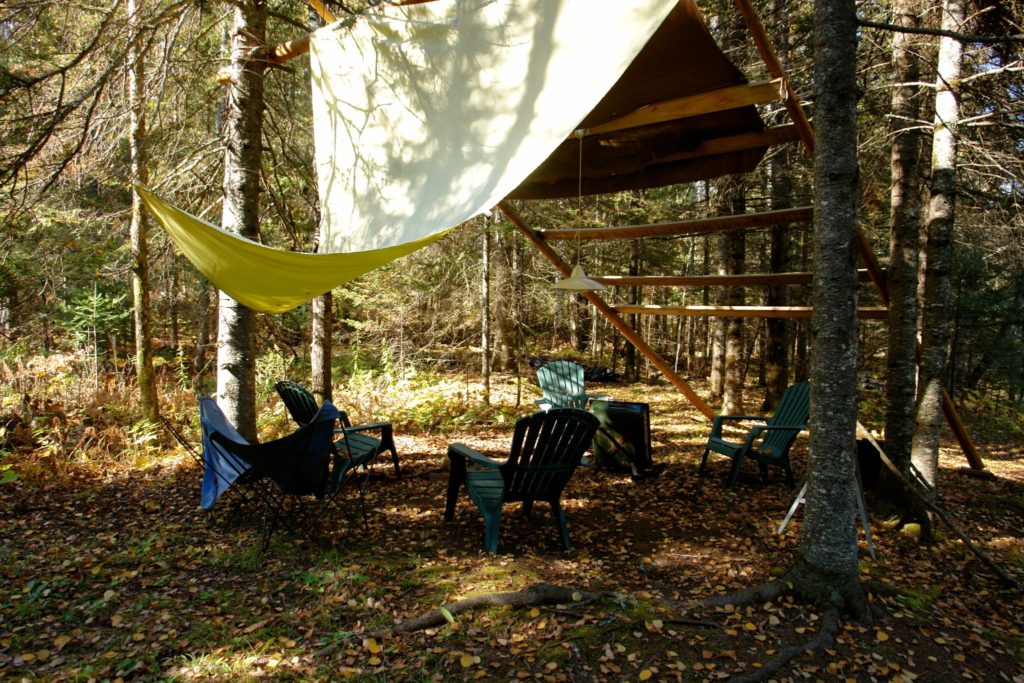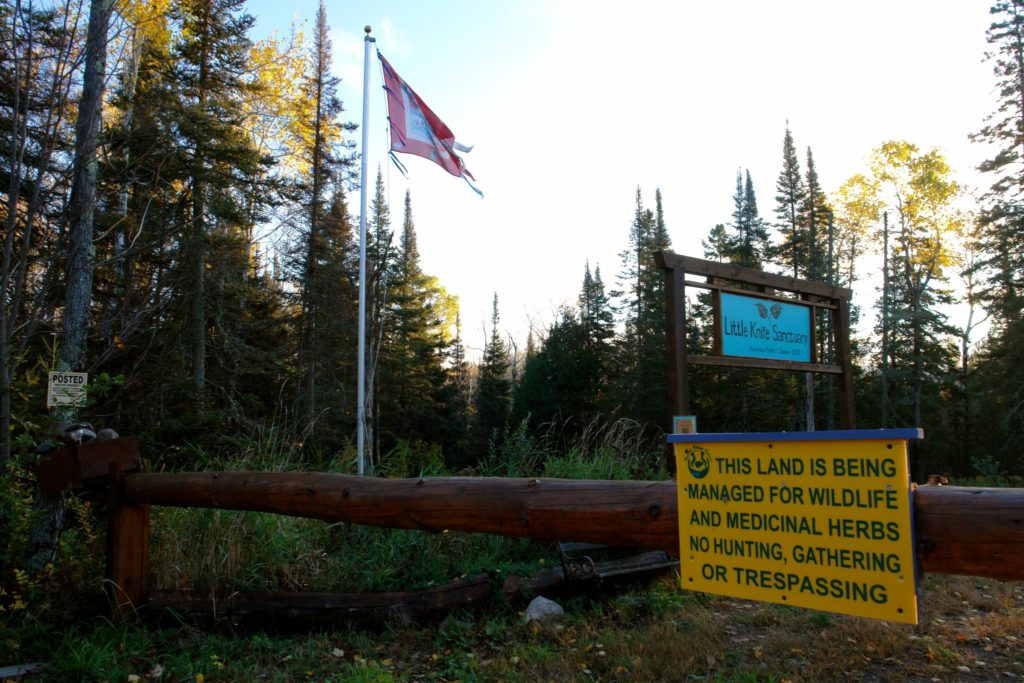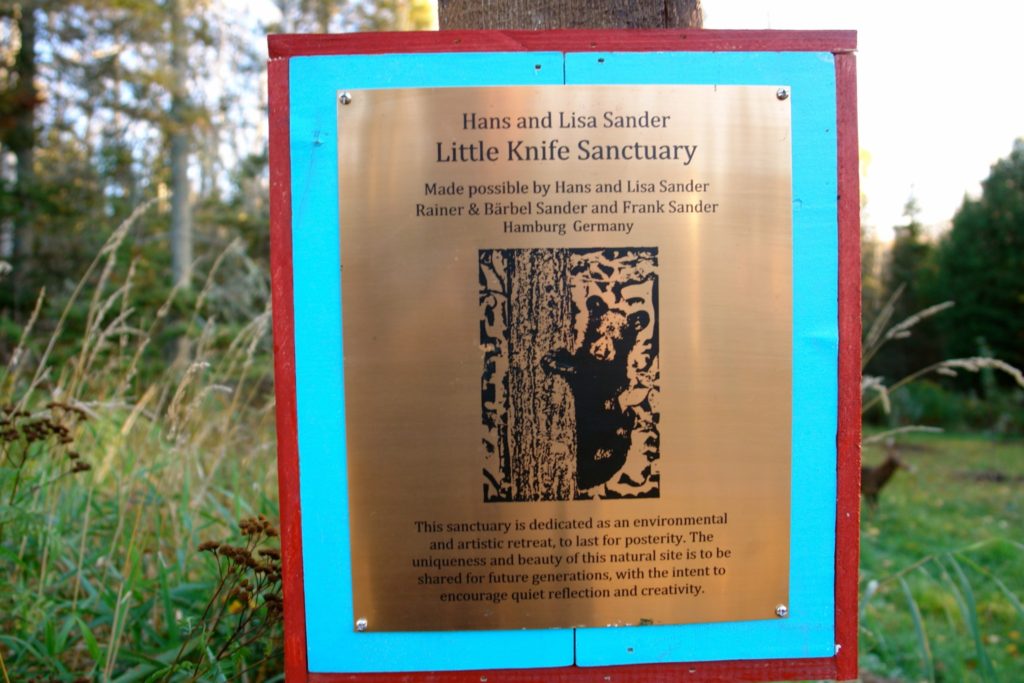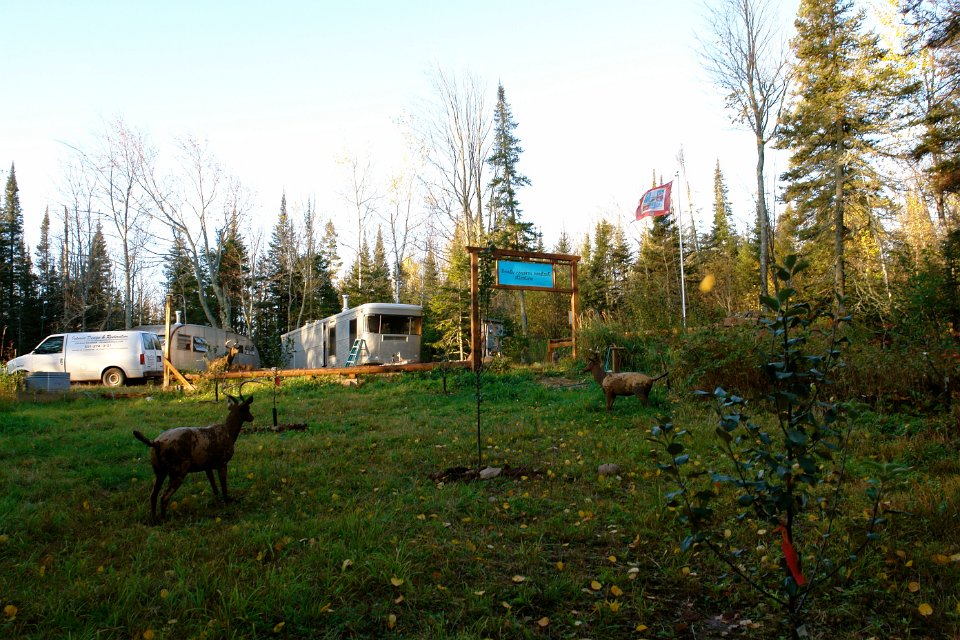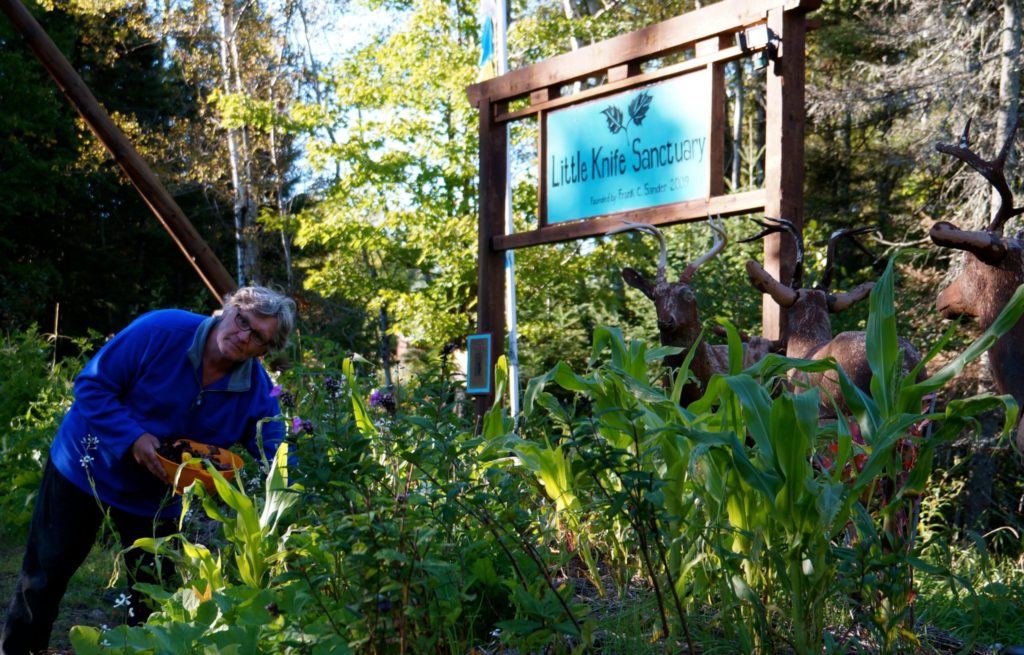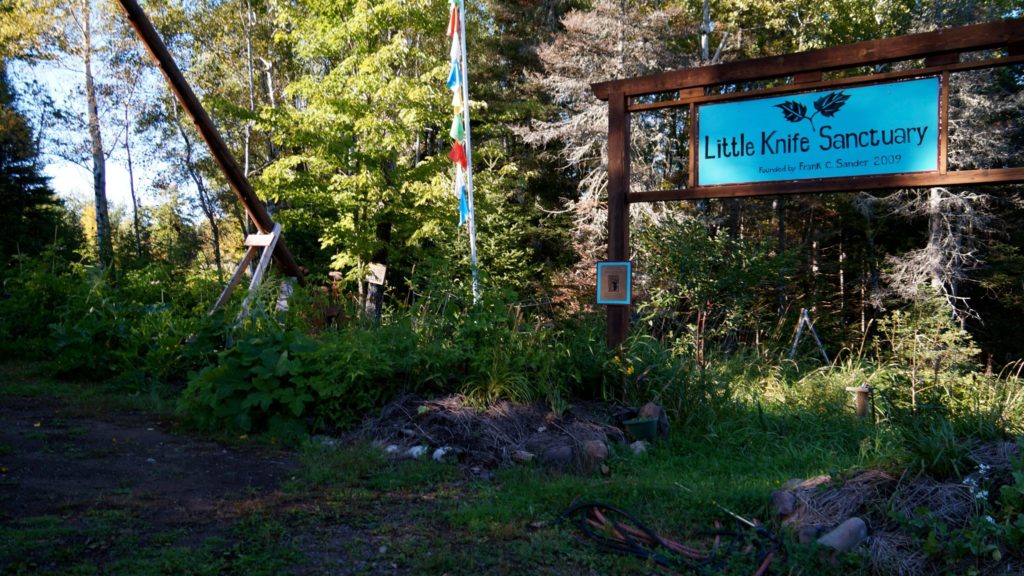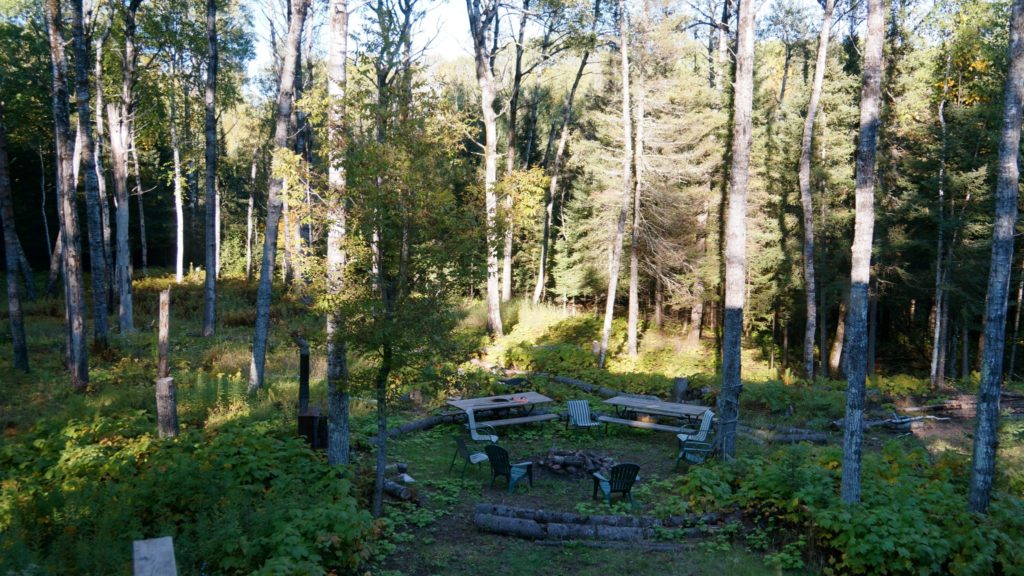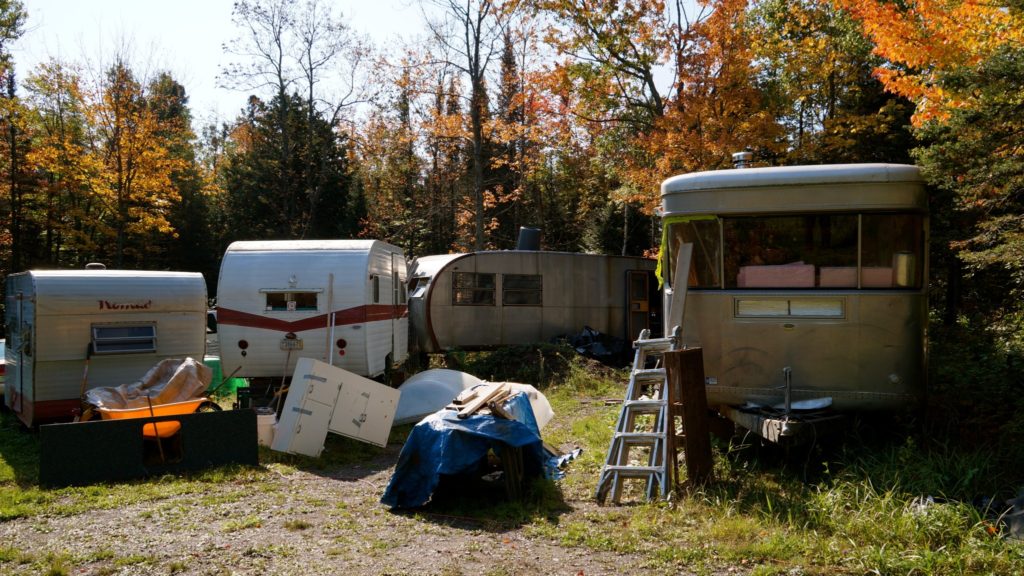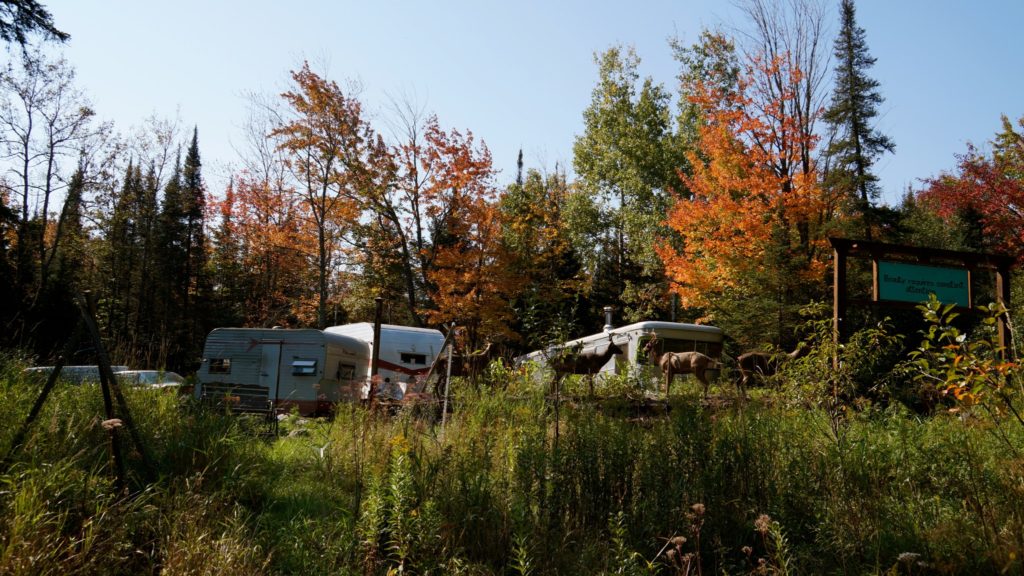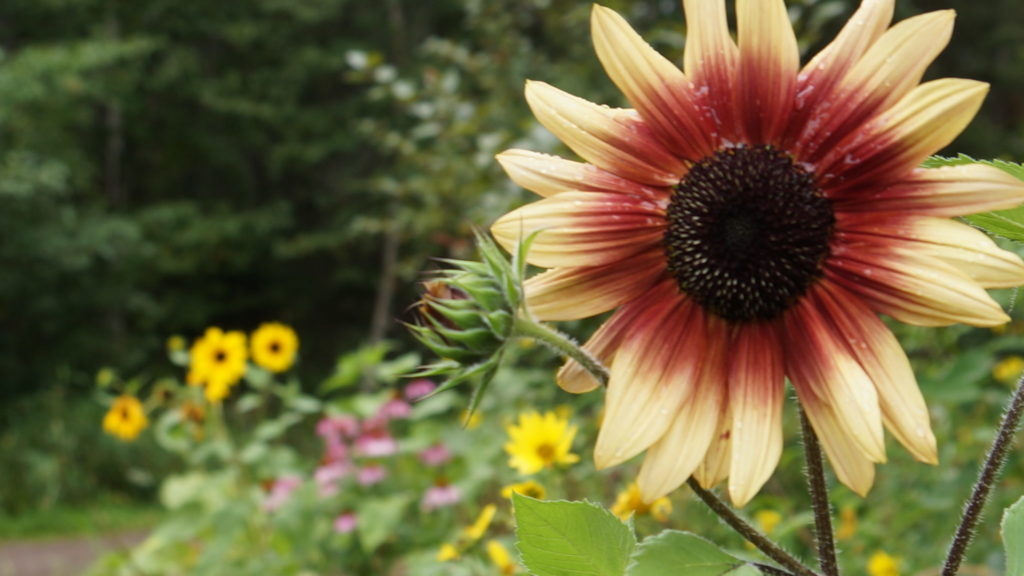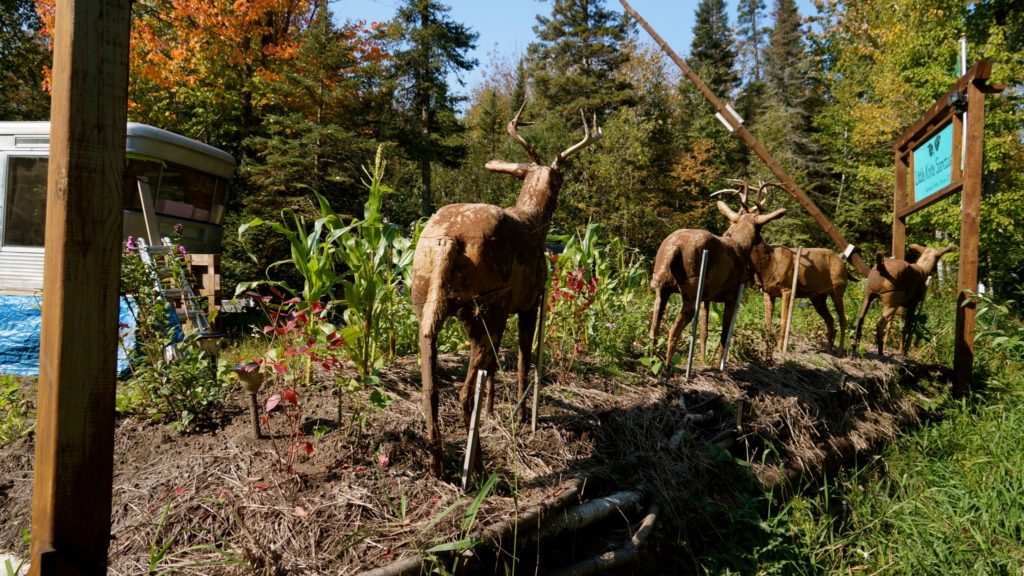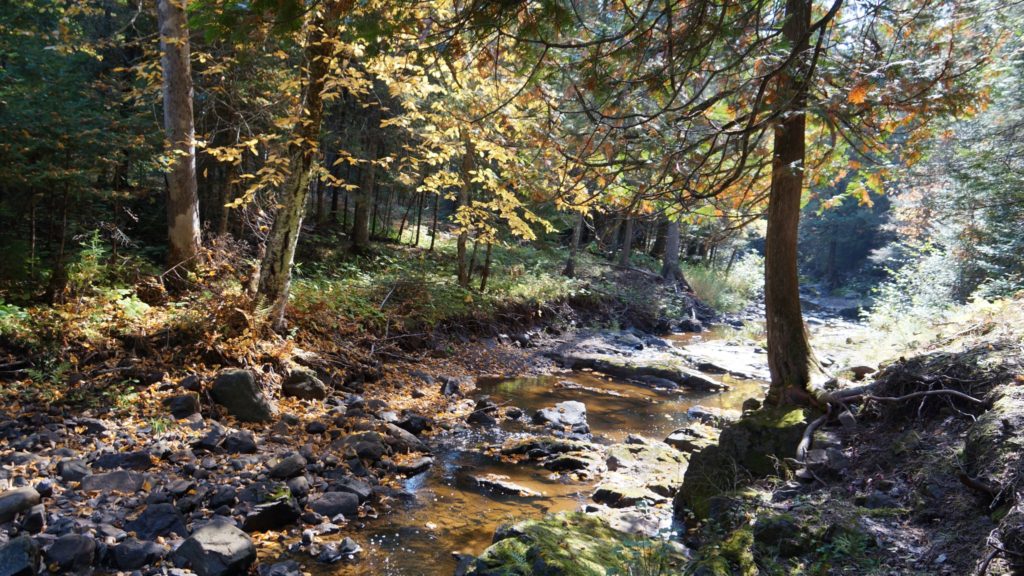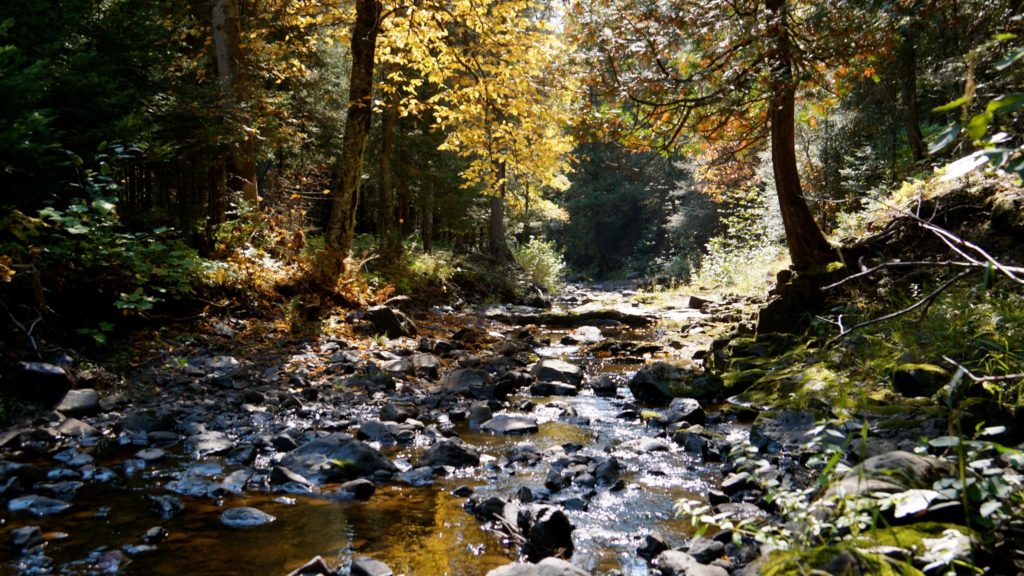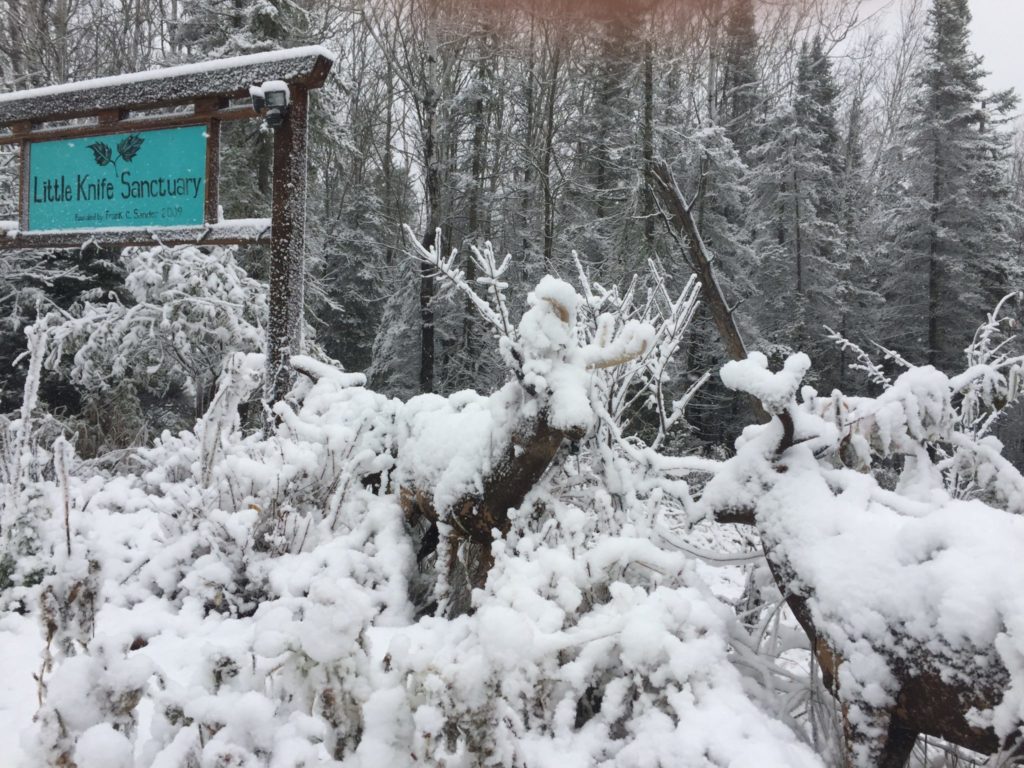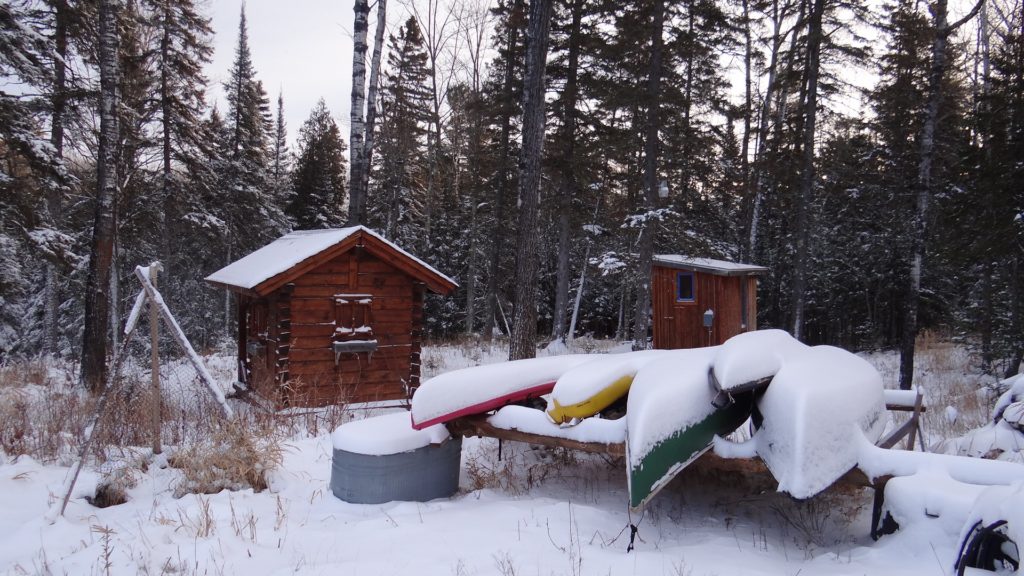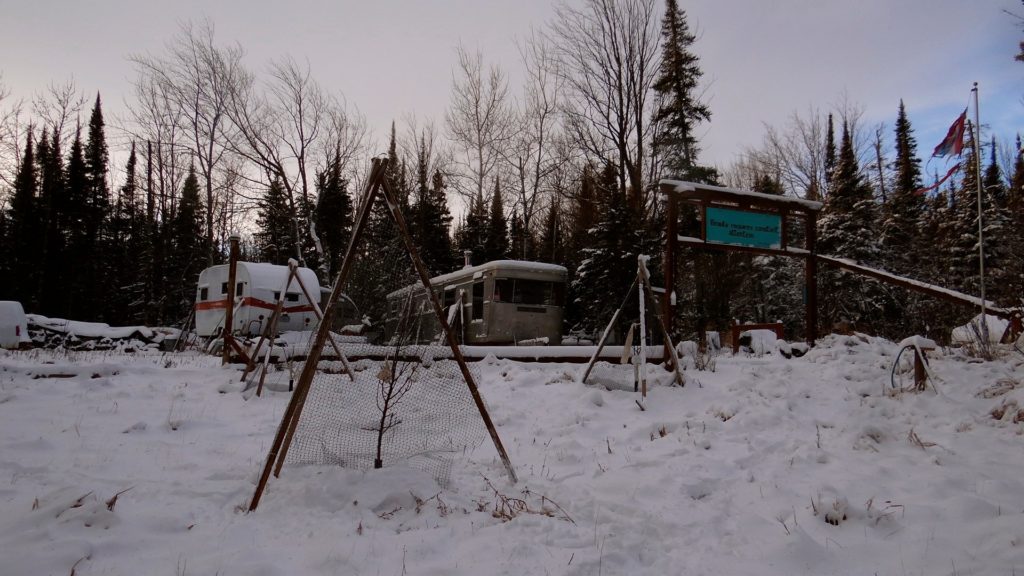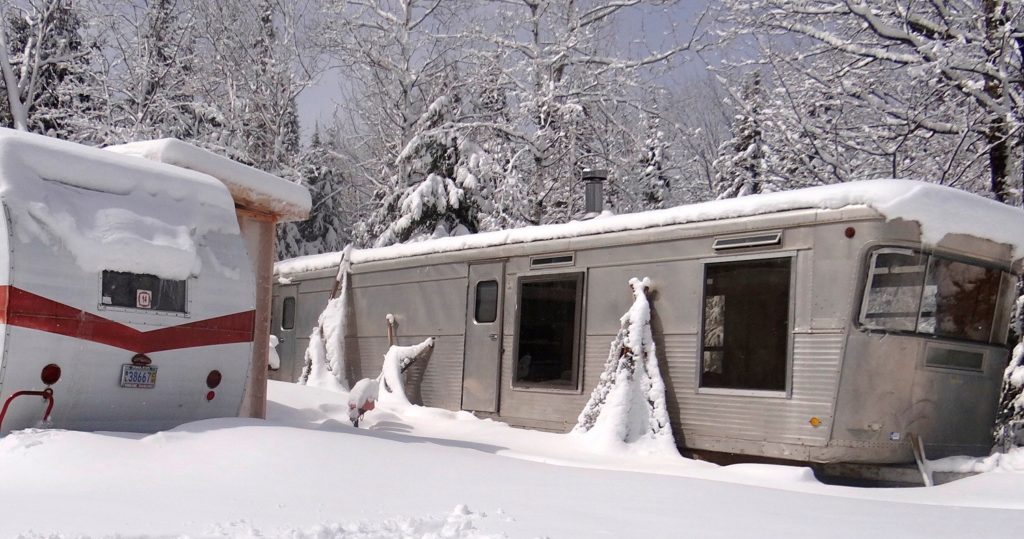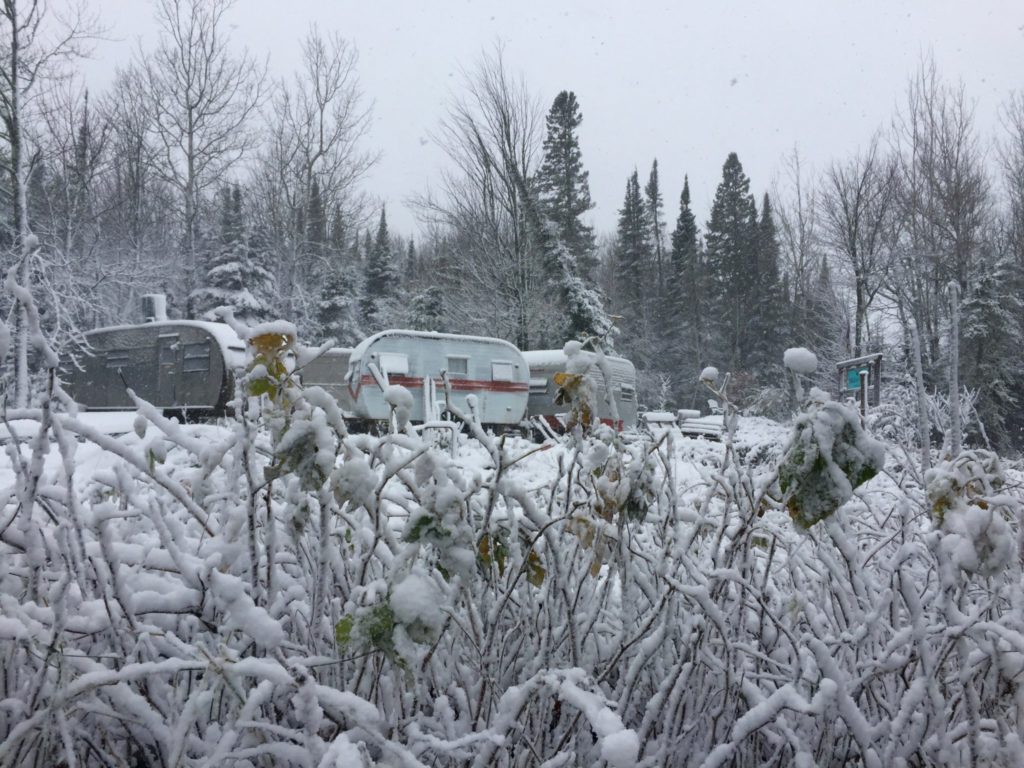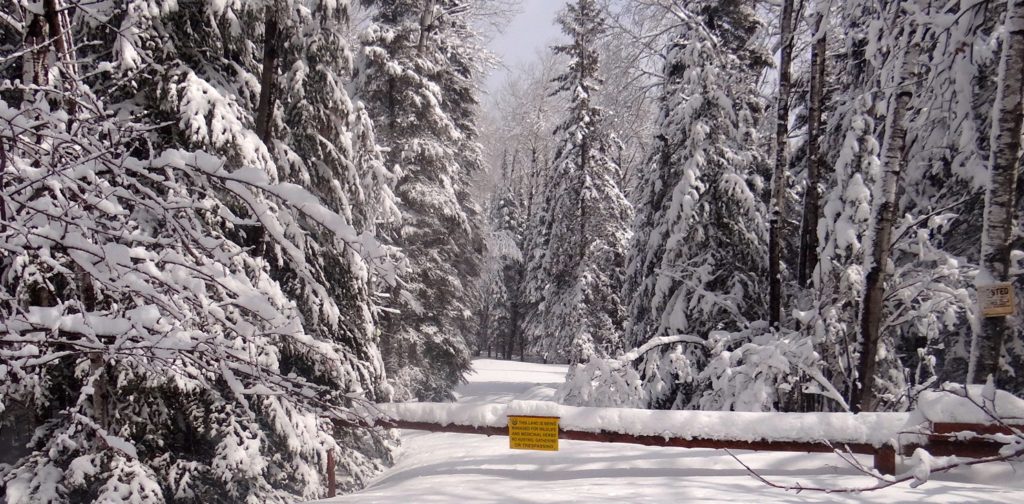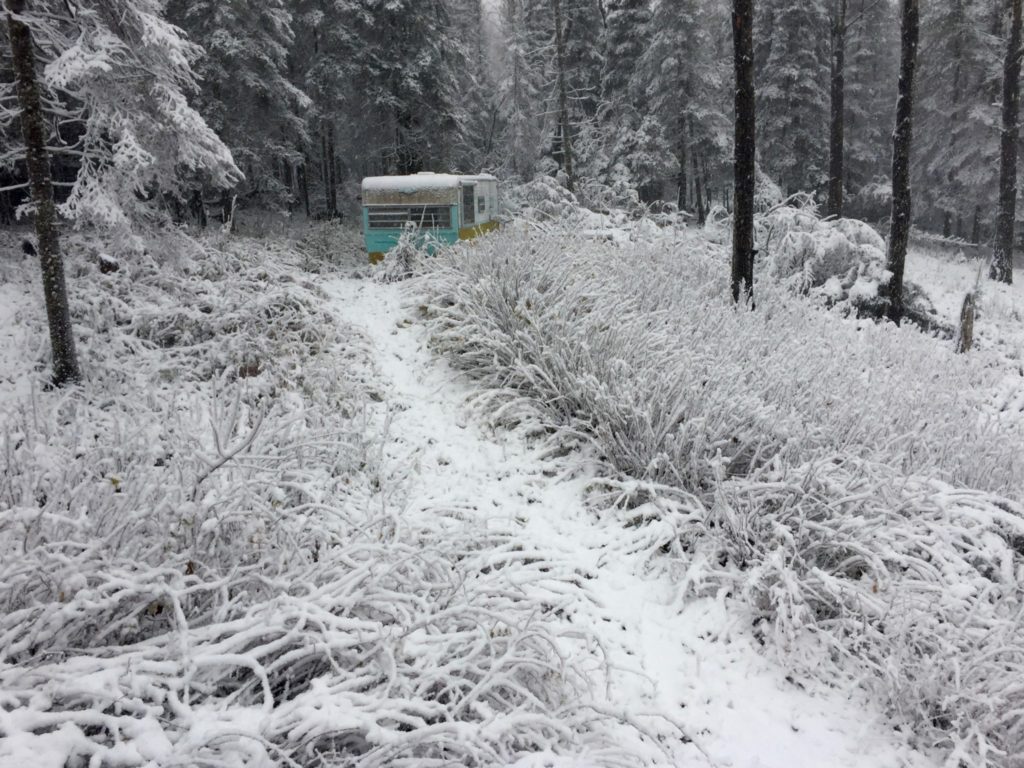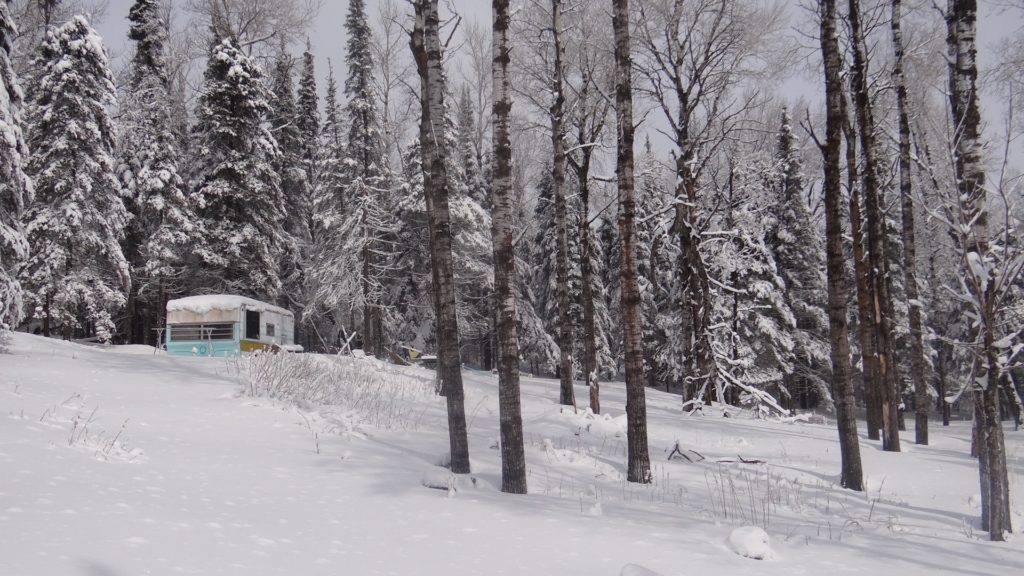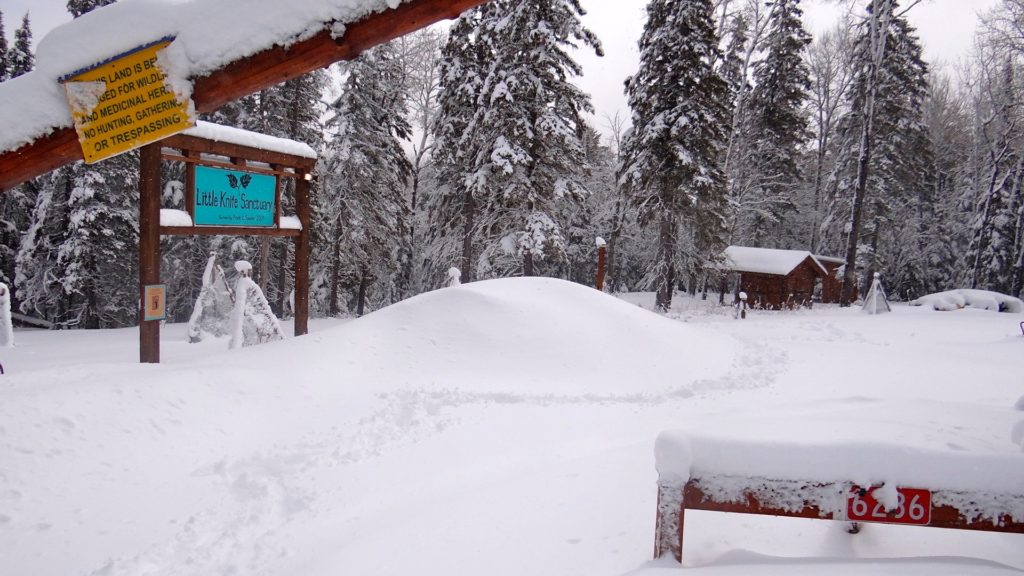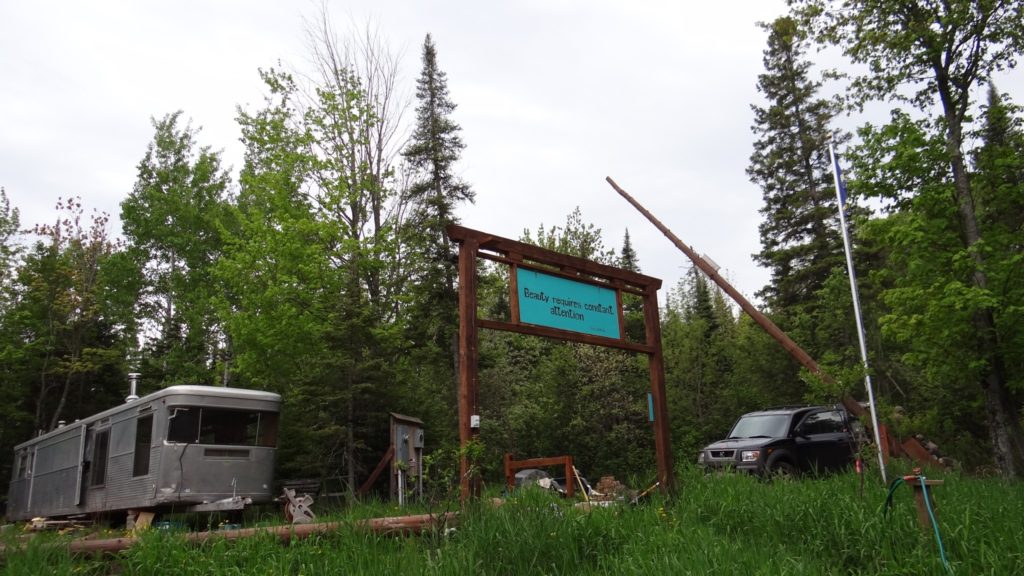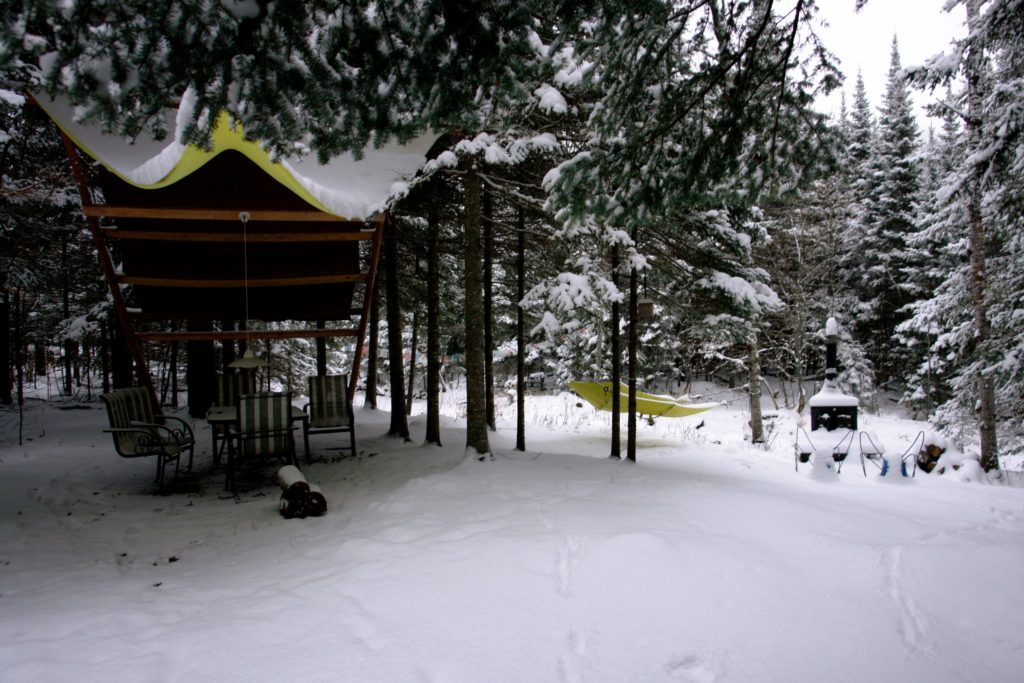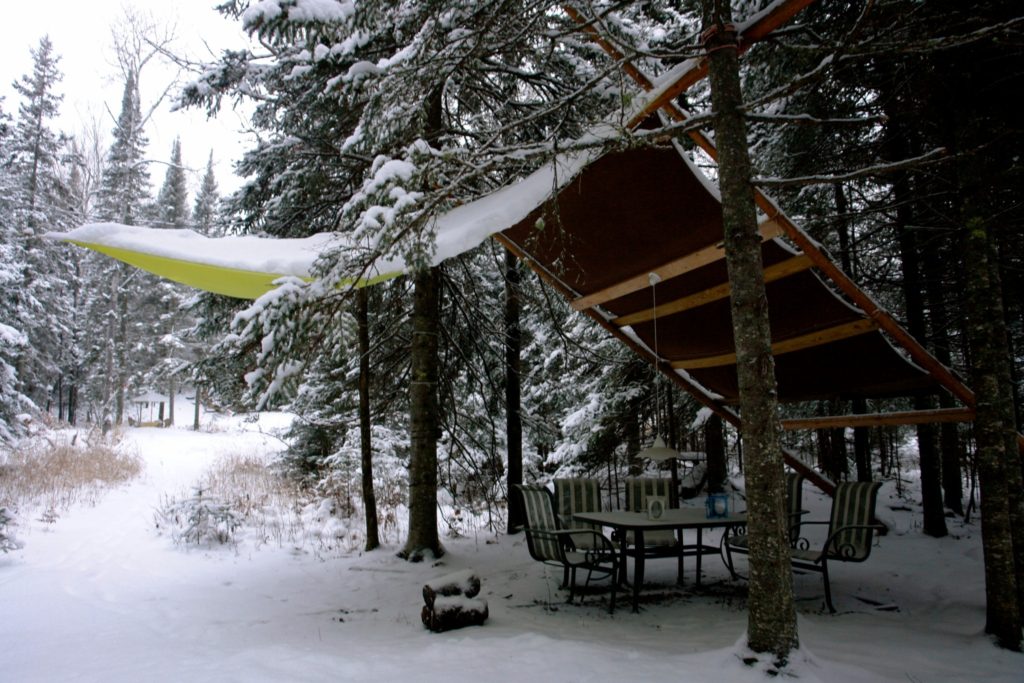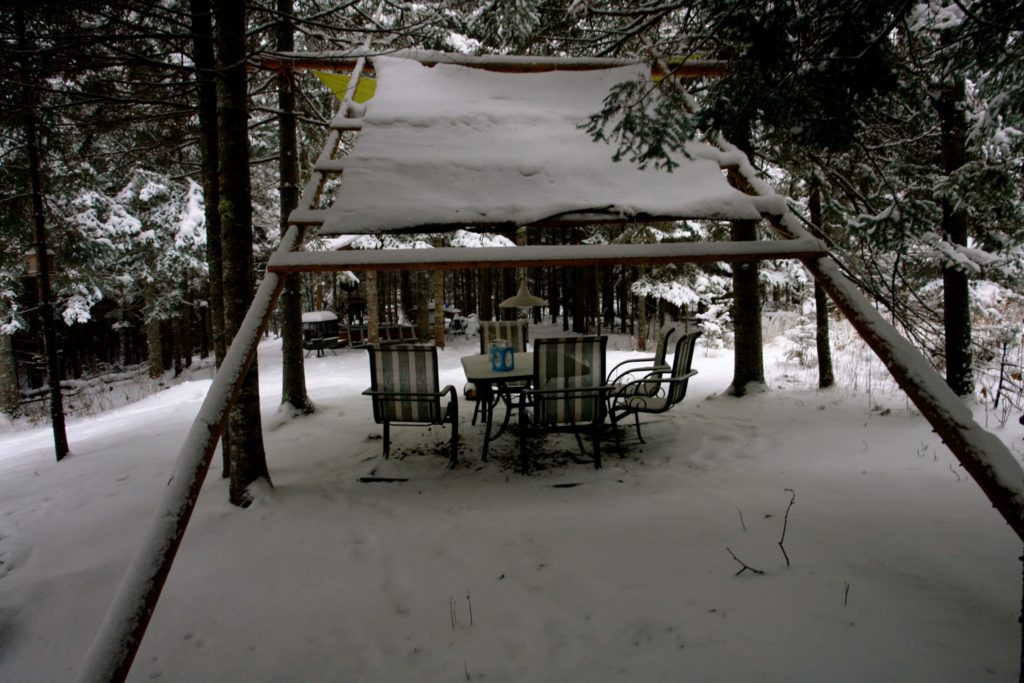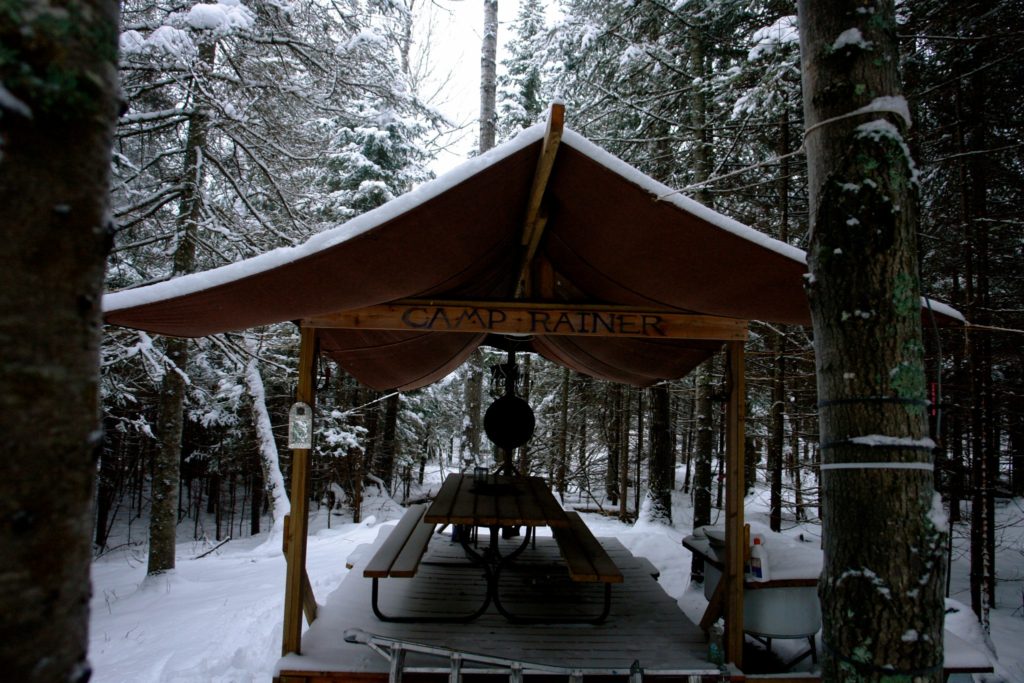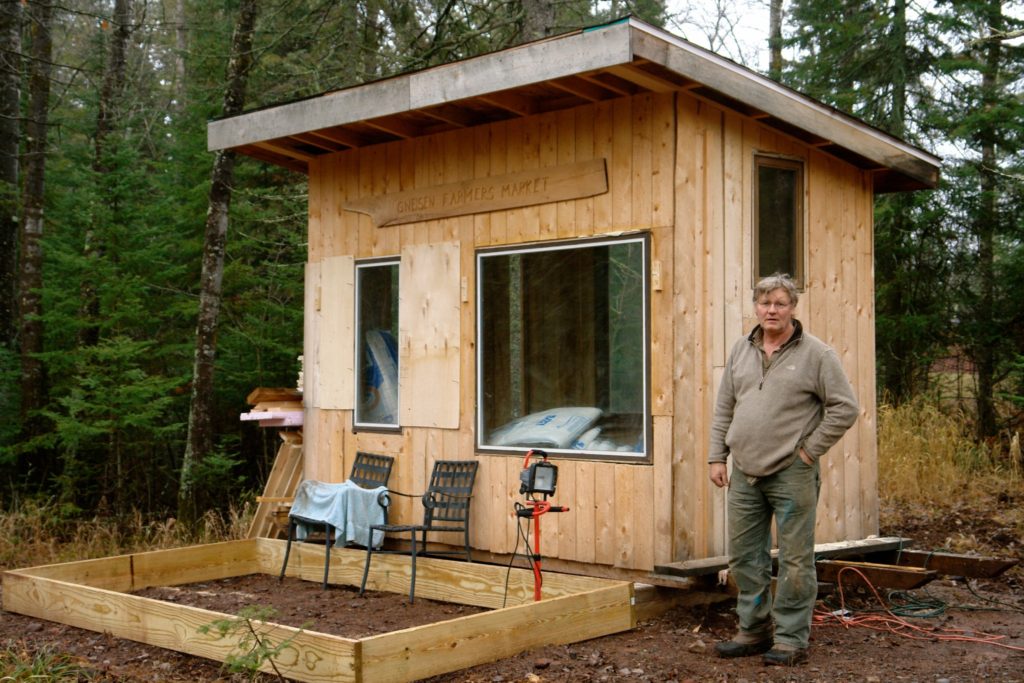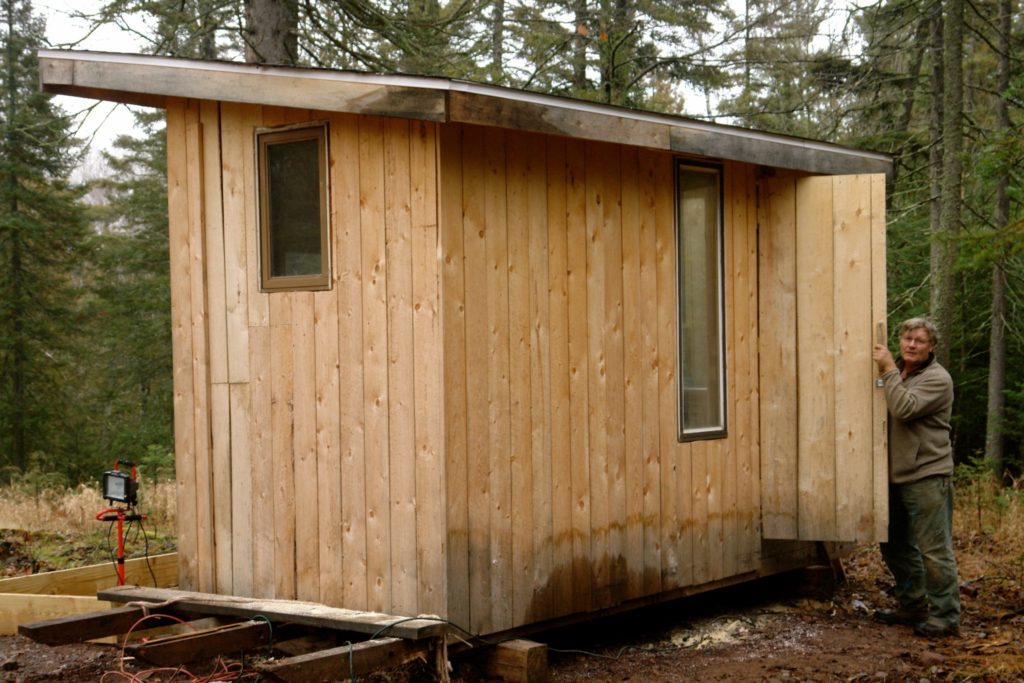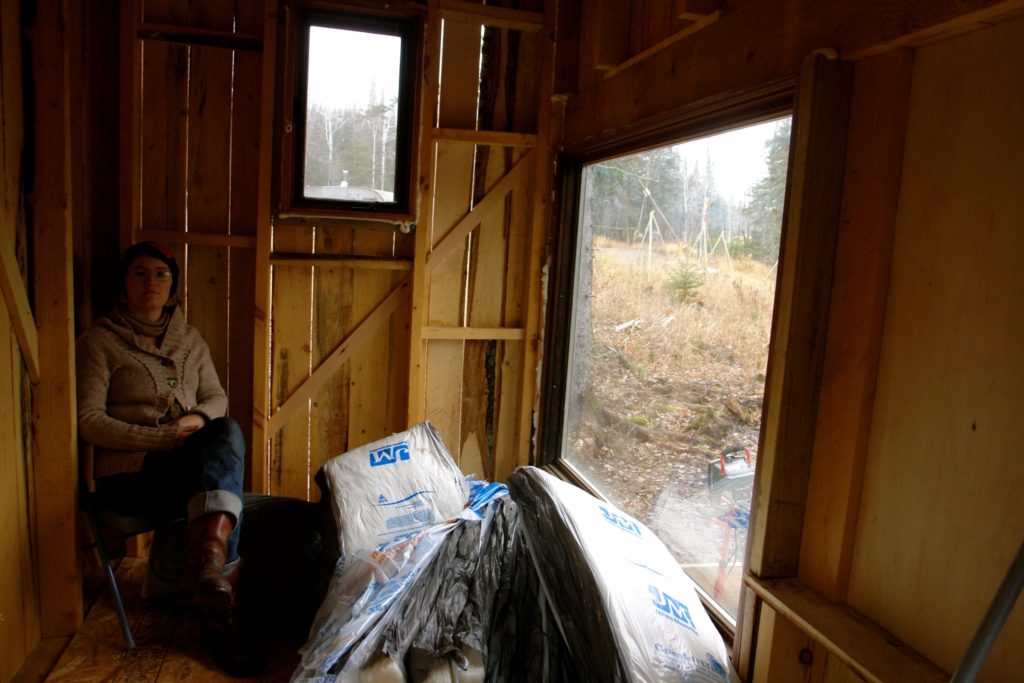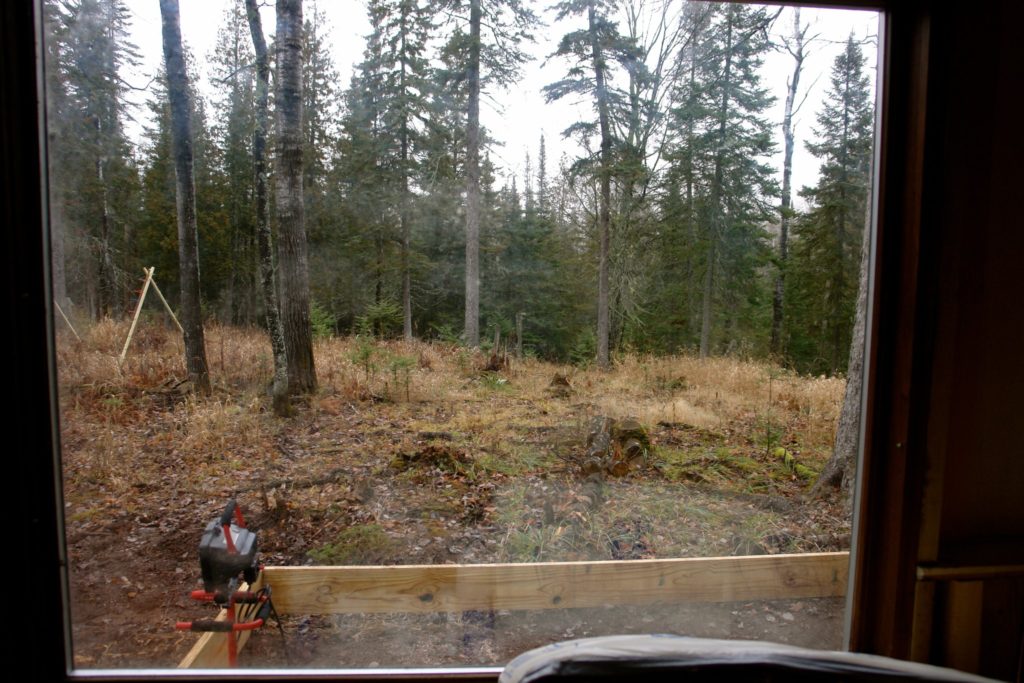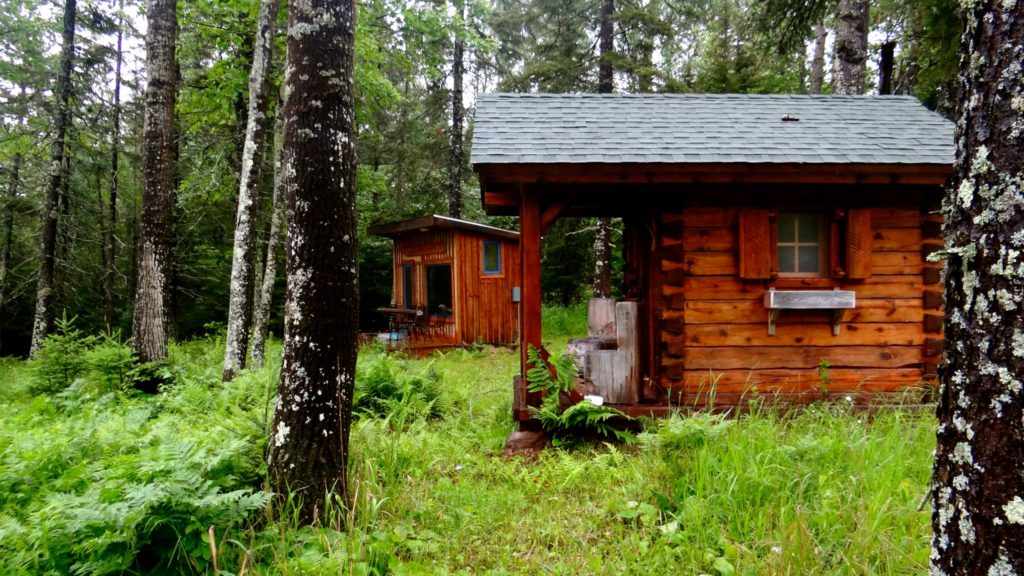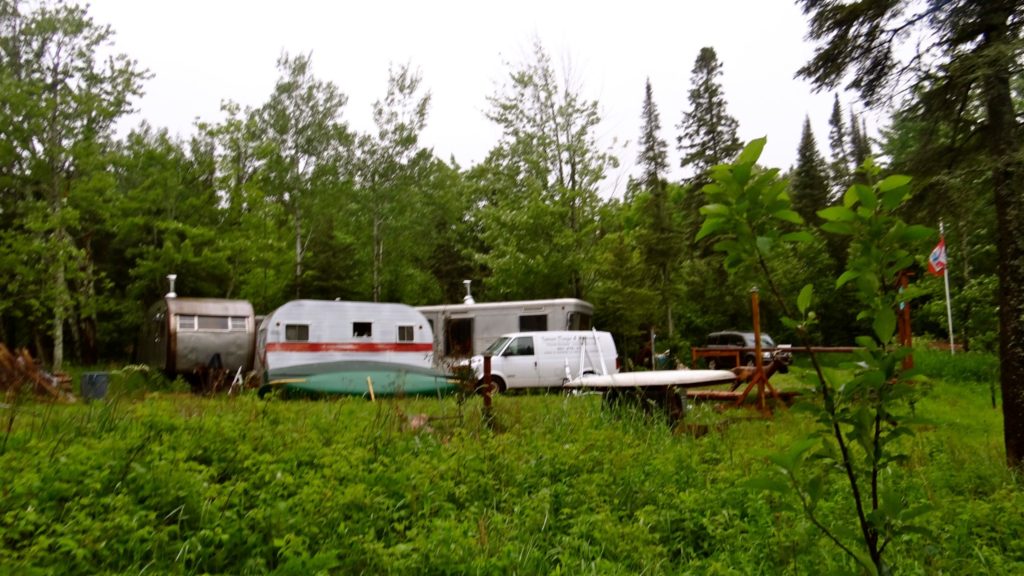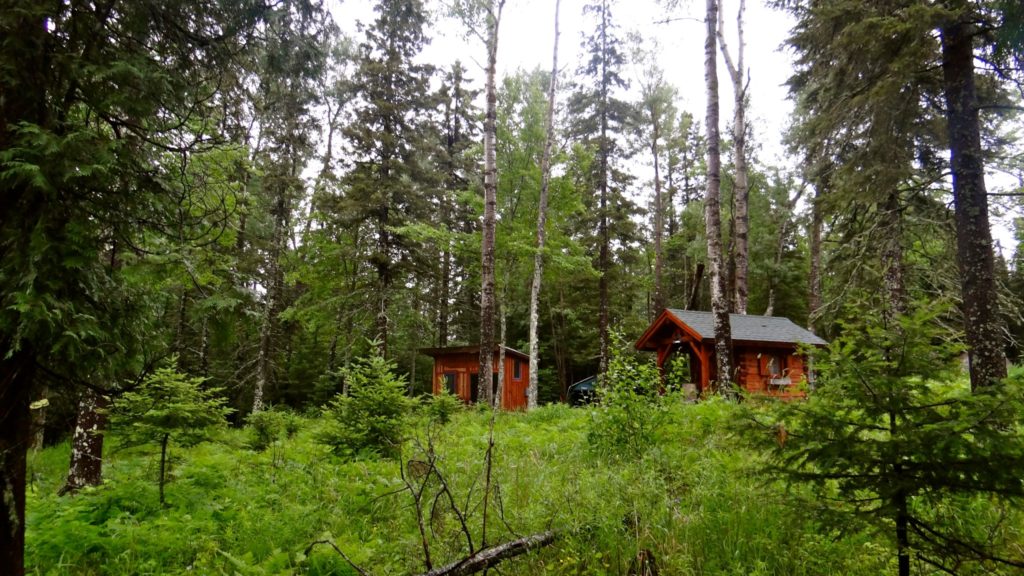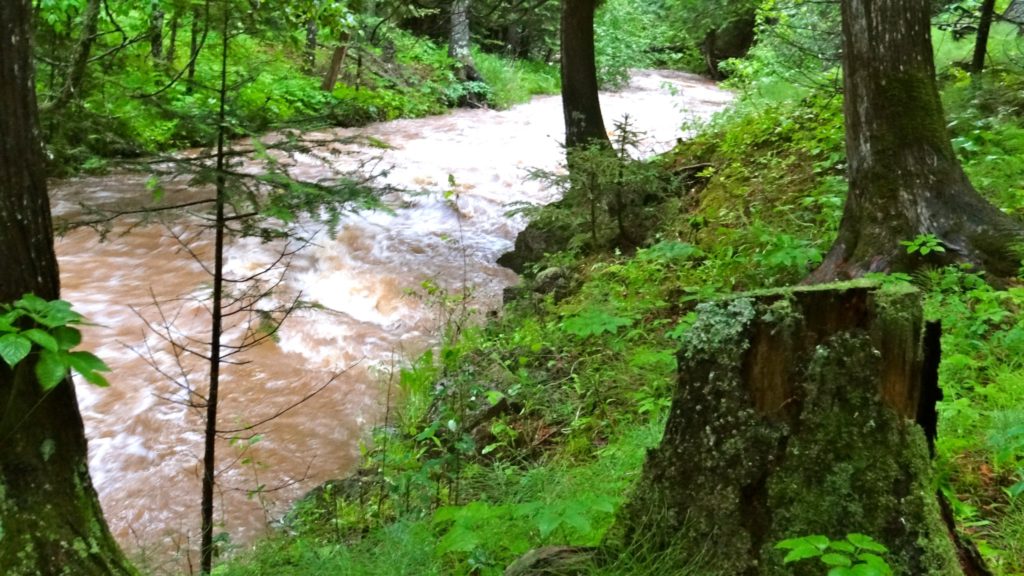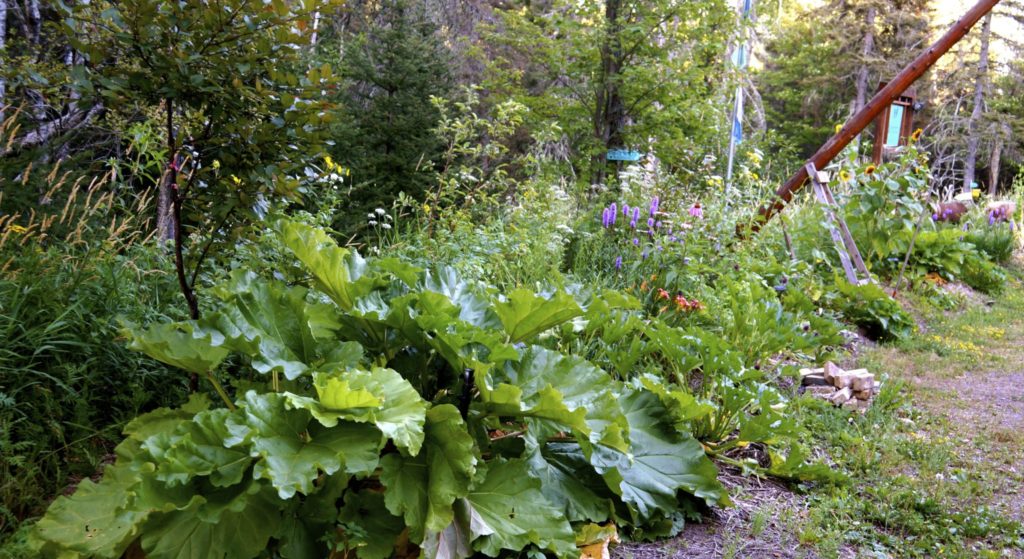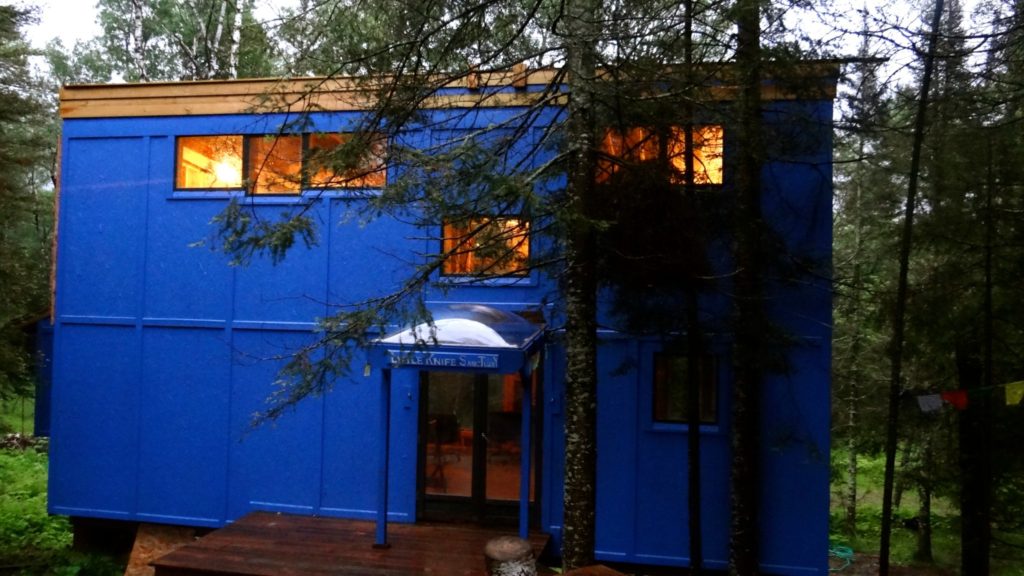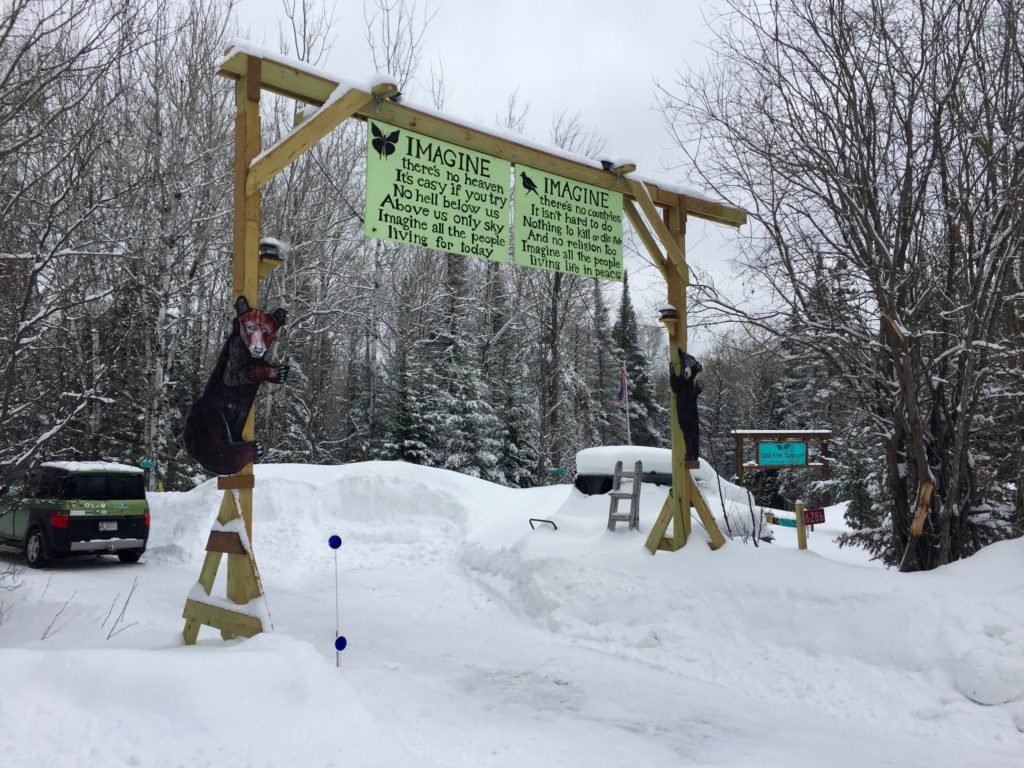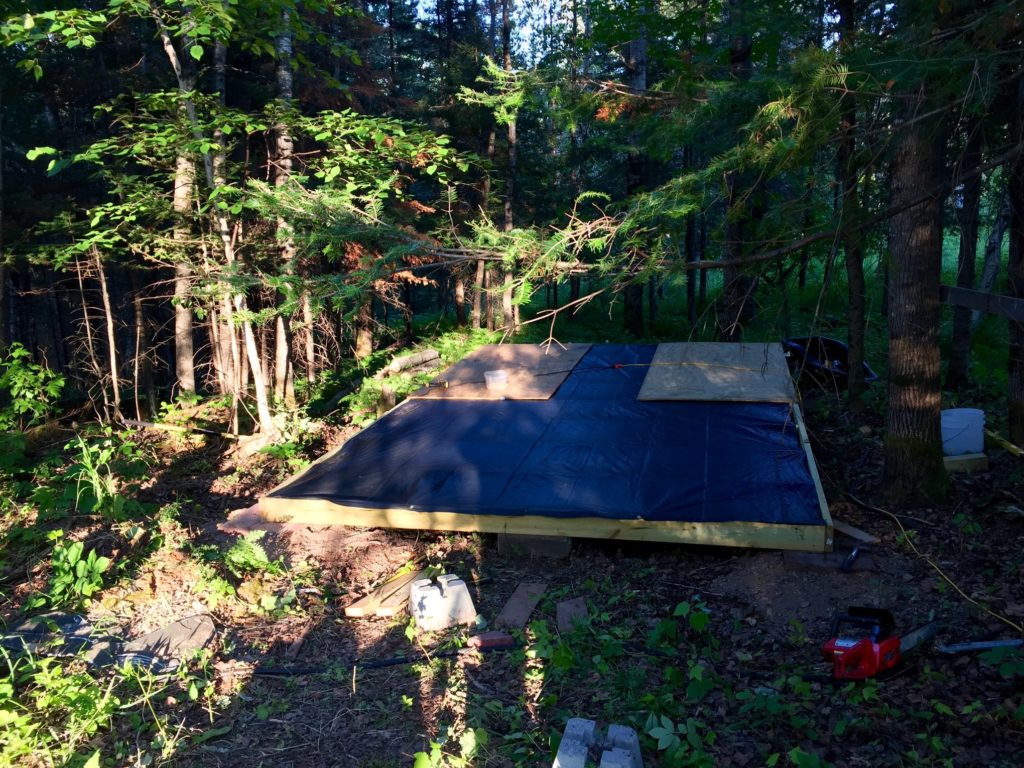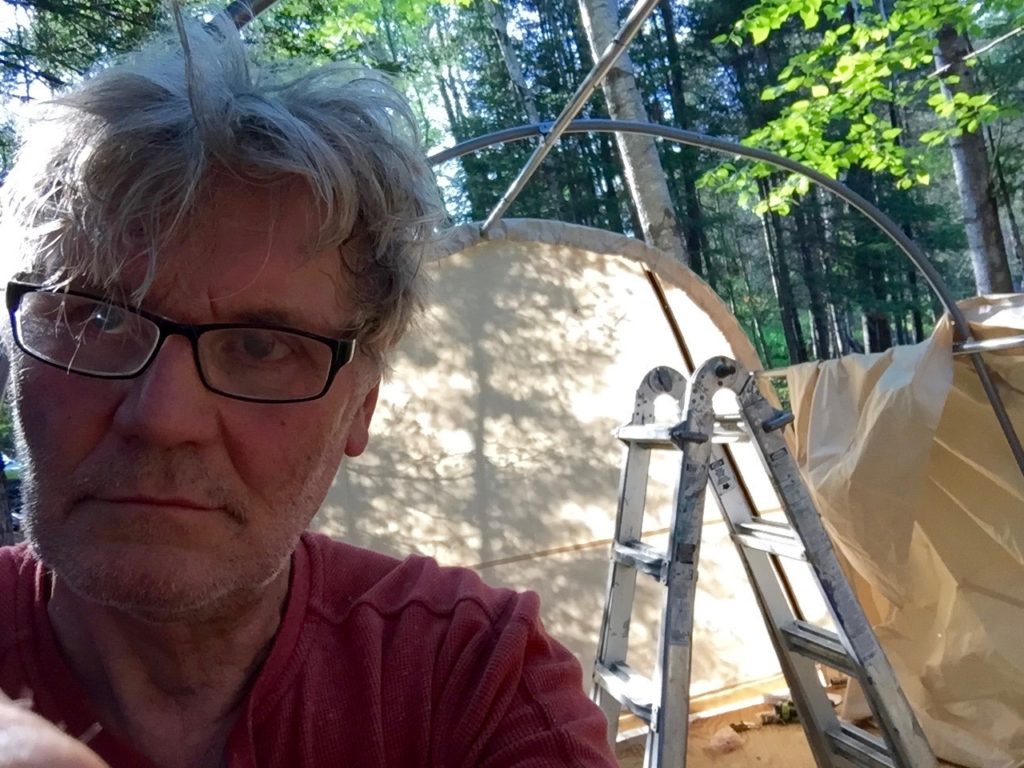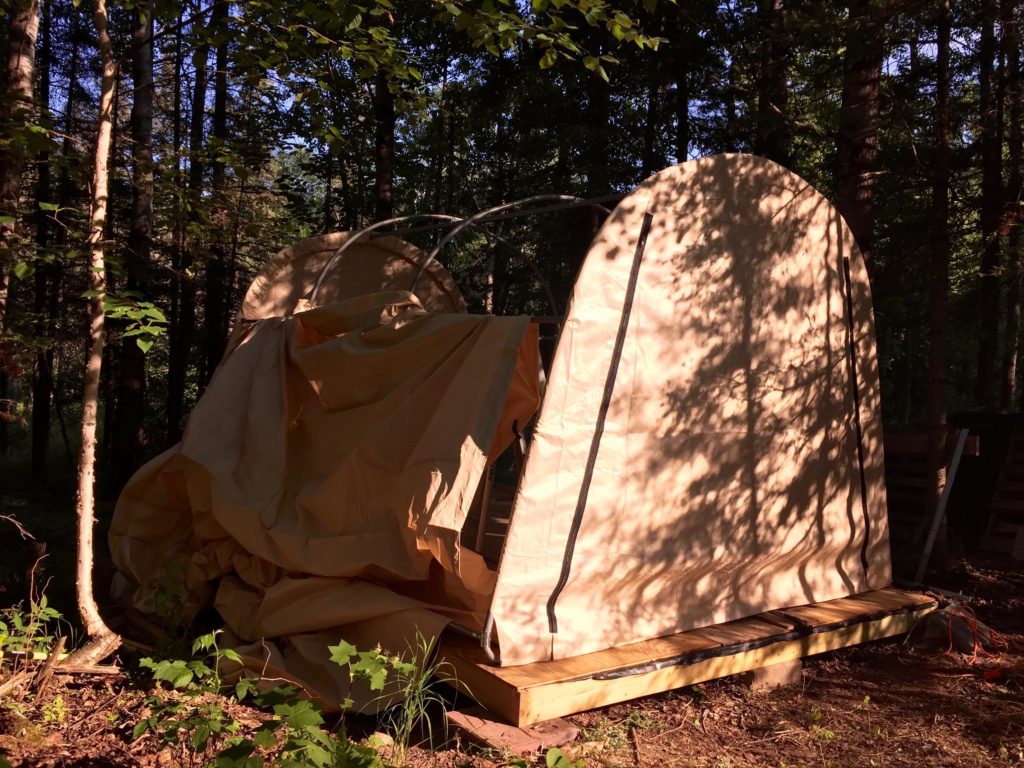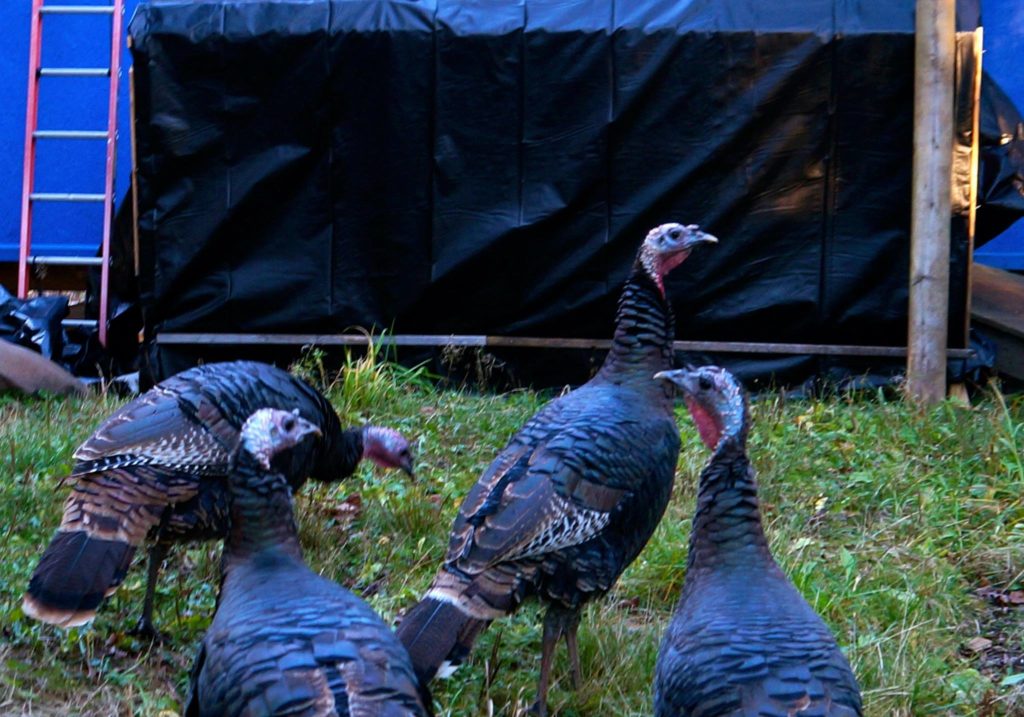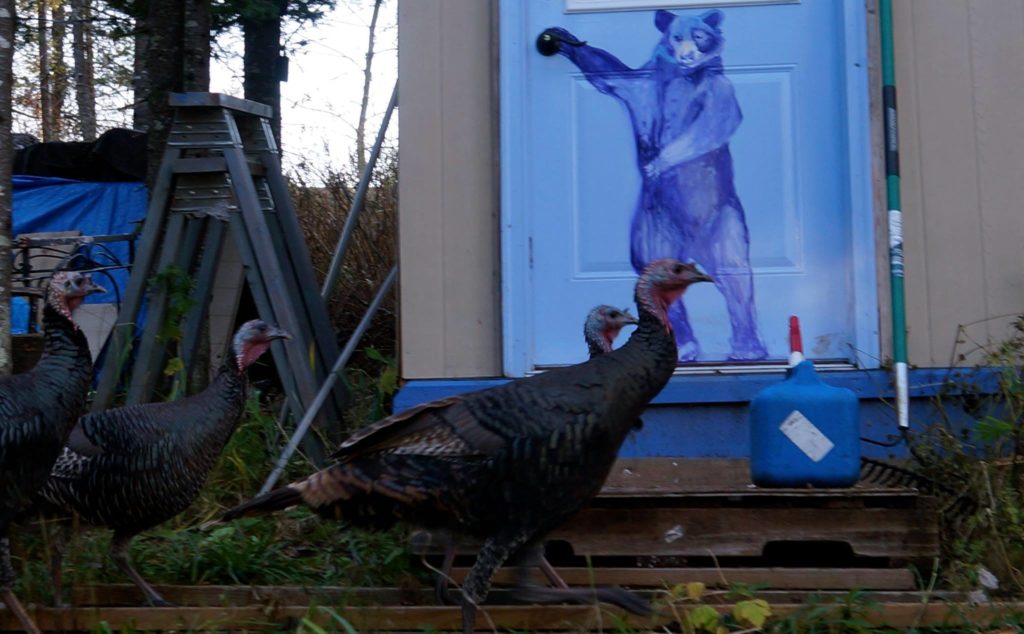Impressions
Through the seasons, and through many building projects and visions – the sanctuary is a place of change, vision, and creativity even in its early stages.
A Visual Tour of Little Knife Sanctuary

The hornets nest is now empty at the Little Knife Sanctuary. Long Live the Queen. In the vast majority of cases, mated queens are the only wasps and hornets to survive the winter. They do so by hibernating under bark, in a rock crevice or in a burrow. When spring arrives, they wake up and start constructing a new nest -- queens never go back to their old ones.
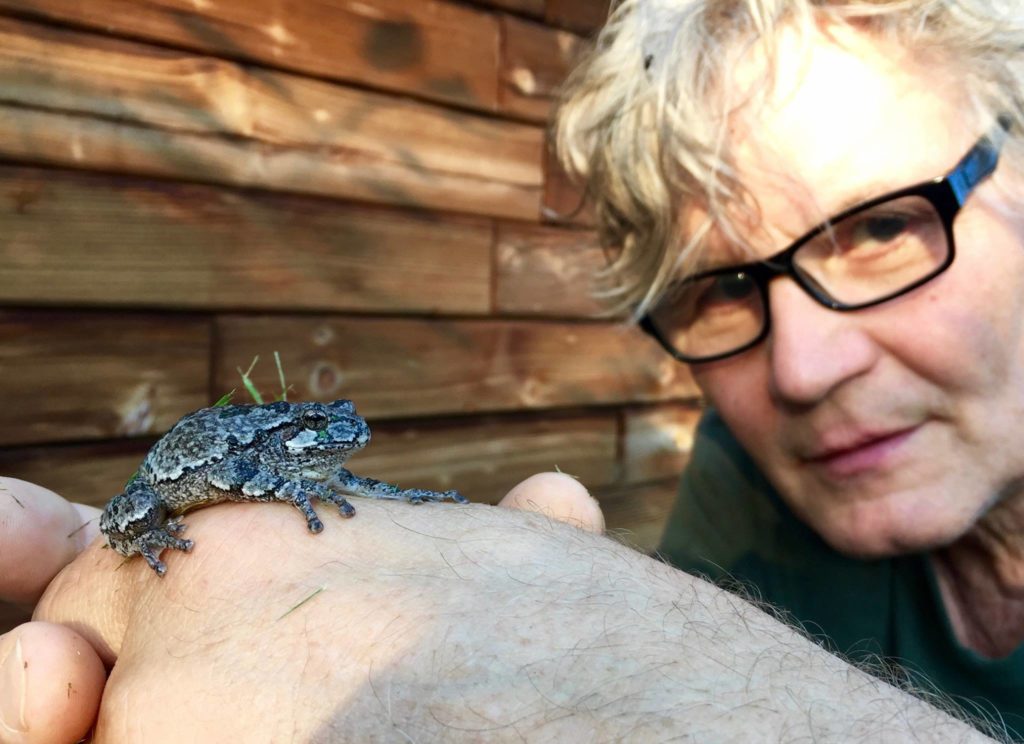
The grey tree frog is a species of small arboreal frogs native to North America with chameleon-like abilities to change colour. These nocturnal frogs have advanced toe pads that allow them to adhere more strongly to vertical surfaces such as tree bark, they rarely descend from high tree tops except to mate and overwinter. When winter comes and the frog is subjected to the sub-zero temperatures they descend under the leaf litter and snow cover and freeze, temporarily suspending their breathing and heart rate. The frog is able to survive freezing at temperatures as low as -8⁰C by using mainly glycerol as its intracellular cryoprotectant (antifreeze) to prevent ice from forming inside its cells. When frozen, 40% of its total body water content is frozen as an extracellular ice mass. H. versicolor has the ability to change color, ranging from mottled grey through to lime green but more interestingly, they turn blue when frozen. The grey tree frog is the tetraploid counterpart of the diploid Cope’s grey tree frog.
Frank Sander
6286 Copperline Road
Duluth, MN 55804
www.littleknifesanctuary.org
